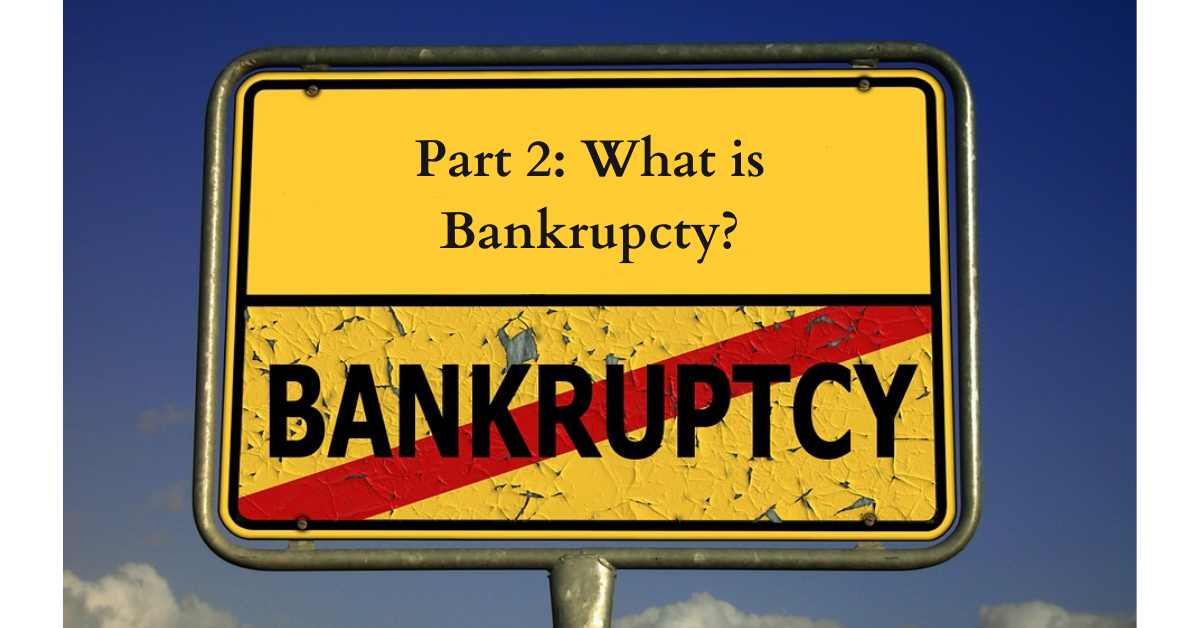Condominiums, Homeowners’ Associations and Bankruptcy: What is Bankruptcy?

Bankruptcy helps people who can no longer pay their debts get a fresh start.
This is the statement that comes at the very top of the page for the United States Bankruptcy Courts. Every accountant and attorney who has ever taken a class on Bankruptcy has heard this said in the first five minutes of the first day of class.
Bankruptcy is first and foremost a societal method to help a person who cannot pay their debts (the “Debtor”). Current Bankruptcy laws also try to make things as fair as possible to the people who are owed money (the “Creditors).
But we always need to remember that Bankruptcy is there to protect the Debtor.
The Feds are In Charge
Bankruptcy is a federal law. Therefore, Bankruptcy is handled in federal Bankruptcy Courts. There is very little that changes from state to state.
Bankruptcy proceedings in Lancaster are managed through the Eastern District of Pennsylvania, while Bankruptcy in York and Harrisburg is handled in the Middle District of Pennsylvania. But the law and process are the same in both.
How It Works
Bankruptcy is designed to help the Debtor. It gives the Debtor a breather when they officially file for Bankruptcy. This is called the “Automatic Stay,” which will be covered in a lot more detail later. The Automatic Stay keeps Creditors at bay and allows the Debtor to organize his or her finances.
When Bankruptcy is over, the Debtor can begin their fresh start by having some of their debts completely eliminated or “discharged.” This allows them to head out into the world without being buried by their debt.
The History of Bankruptcy
Bankruptcy is a societal construction and also a fairly recent invention. I love the American Bankruptcy Institute’s summary of the history of Bankruptcy in the western world because it shows how difficult it was to fall on hard times for most of history. For example, in Ancient Greece or Rome, if a person could not pay their debts, they and their families became slaves. Or they got chopped up and distributed to their Creditors.
There was no fresh start in Ancient times.
Thankfully, the beginnings of support for debtors began to emerge. The article points out:
[M]edieval Italians did offer some form of debt relief for those who could not pay all their debts if they exposed their naked bodies in public and then banged their backsides on a public post while loudly proclaiming ‘I am bankrupt’ three times.
To Ebenezer Scrooge’s delight, England placed people who could not pay their debts into prisons. As recently as 1921, England held about 400 people in debtors’ prisons.
In contrast, more than two centuries earlier, the United States Constitution expressly gave Congress the ability to create Bankruptcy laws. Congress first passed temporary, limited Bankruptcy laws in 1841 and 1867. Then, in 1898, Congress passed a permanent Bankruptcy law. This was changed in 1978 to resemble the Bankruptcy law we have today. There were major tweaks in 1994 and 2005, as well.
Today, advocates for reform are proposing another significant change to the Bankruptcy laws. The headline of this new proposal would be ways to eliminate student loan debt.
Putting It In Focus
Some people think of Bankruptcy as a way for spendthrifts to get out of paying their bills. I am sure that is true for some Debtors. There are lots of misuses of Bankruptcy, just like there were lots of misuses of debtors’ prisons (see about half of the writings of Charles Dickens).
Nonetheless, Bankruptcy today is not, fundamentally, an economic exercise. It is a social safety net that tries to help people who cannot help themselves. Whether you agree with this safety net or not, understanding why Bankruptcy exists is fundamental to understanding all of the rules, exceptions and procedures that follow.
Next time: more terms, definitions and overall legal stuff. Less Hardcore History.
Part I: How Does a Unit Owner Bankruptcy Affect Collections?
